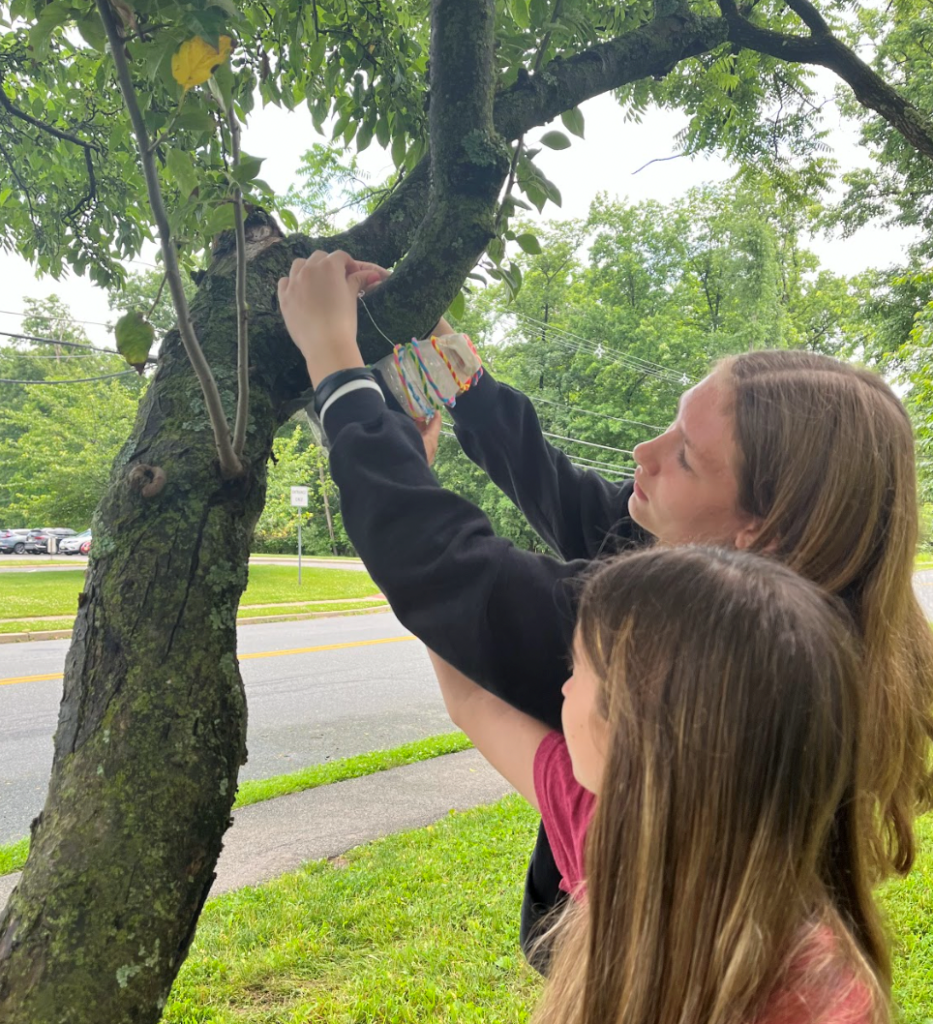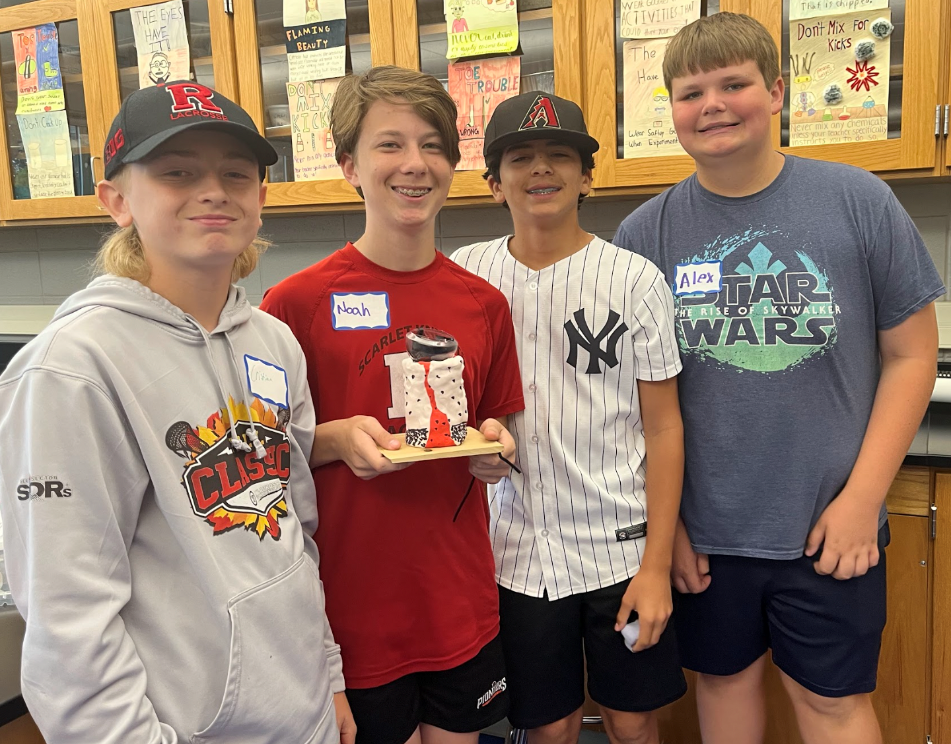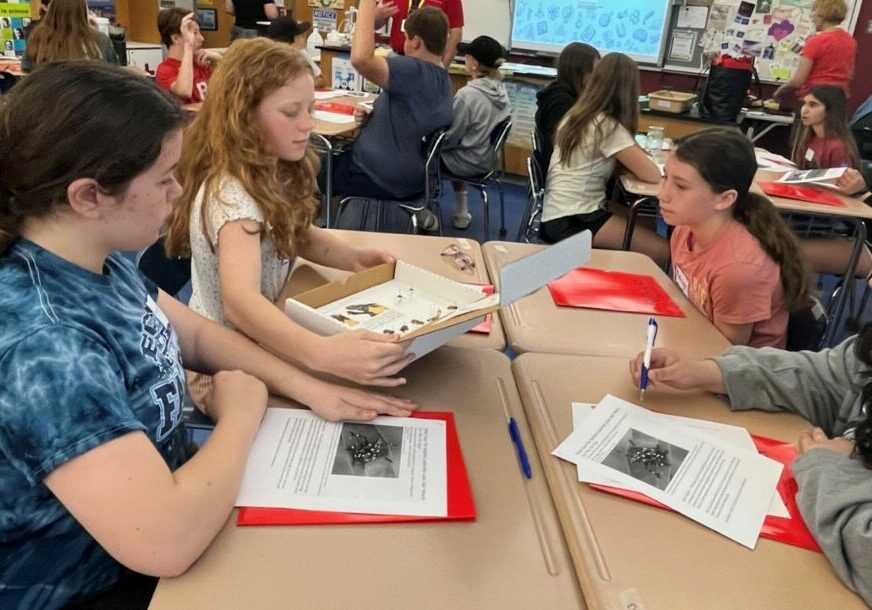A STEM partnership through Rutgers University’s maker certification program
By Danielle Puglisi
Picture this: On the day before the long-awaited freedom of 2022 summer vacation, seventh grade students at Branchburg Central Middle School (BCMS) were not watching movies or signing yearbooks. They enthusiastically participated in a spotted lanternfly eradication engineering-design challenge that demonstrated a notable example of citizen science and place-based education.
These students got an important opportunity to investigate the real-world problem of the devastating invasive lanternfly. In order to design solutions to the lanternfly problem damaging the Garden State, the students learned about the bug’s life cycle and how as few as 30 of them can kill a grapevine. These students designed, built, redesigned and tested their lanternfly traps—all while their teachers observed in the wings.
Solving problems has always been an integral part of my career. I became the STEM instructional coach at BCMS in the 2019-20 school year after teaching middle school mathematics for nine years. The new challenges of supporting learning in the science, technology, and engineering disciplines both excited and scared me. I knew I had a lot to learn to do right by my colleagues and our students.
As COVID-19 swept across the globe and changed much of what we once knew about education, my priorities shifted as I helped my school community navigate new modes of instruction. Then, in the fall of 2021, our school experiences started to resemble normalcy, and I began researching professional development at the graduate level that would better my ability to support rich STEM opportunities.
Last spring, I enrolled into Rutgers University’s new Maker Education hybrid certificate program and became a member of the program’s second-ever cohort. The program’s goals focused on enabling “educators to create and run a makerspace, become proficient in maker-based projects, and explore maker-centered pedagogy for STEM-rich learning.” Intrigued to be learning something completely new, I found myself fascinated by the creative ways that maker education can transform student learning. Makerspaces are designed for flexible thinking, collaboration, imagination and—most importantly—making! Schools, libraries, universities and other public institutions globally are increasingly developing makerspaces to support 21st-century learning and innovation.

The making mindset
In the first course of the sequence, the Maker Mindset, I was put in the shoes of a student, going through various interdisciplinary design challenges, and learning how to “fail forward.” This remains one of the most important overarching themes of the maker movement; we want students to be OK with not reaching “the right answer” the first time they approach a real-world problem. We want them to learn how to problem-solve as real engineers do, to persevere and to reflect on their errors and processes.
Admittedly, this was the hardest lesson for me since I had never been in this type of learning environment. The program professors, Chris Anderson (a technology consultant and adjunct professor) and Lauren Shohen (a STEM educator in the Morris School District), did an excellent job modeling the importance of growth mindset in class. Through dedication and grit, I gained hands-on practice in a variety of skill sets valuable to making, including basic circuitry, soldering, coding, CAD drawing and 3-D printing.
Maker safety
The second course focuses on maker safety and highlights the layers of safety needed in any maker environment. Live guided practice sessions at Rutgers’ on-site makerspace adds to the learning experience, helping educators feel confident using tools and machines safely in their classrooms with students. We experimented with foam wire cutters, drill presses and scroll saws, to name a few.
Maker environments
I am currently enrolled in Maker Environments, the third class in the sequence, and learning how to write maker-centered curricula, instruction and assessments that align to multiple standards. Advocating for makerspace pedagogy and facilities is another focus of this course. I look forward to obtaining my certification in fall 2022 after completing a capstone project to further my school’s makerspace opportunities.
Students design and create devices to trap the spotted lanternfly
Through my coursework and live classes, I met Eddie Cohen, assistant director of Rutgers’ Center for Mathematics, Science and Computer Education (CMSE), and Brielle Kociolek, Rutgers’ iSTEM coordinator. They offered a design-thinking, professional development initiative on spotted lanternfly eradication for teachers and students in grades K-12 at local wineries of Terhune Orchard and Beneduce Winery since fewer than 30 lanternflies can kill a grapevine! Unfortunately, my schedule did not allow me to attend this training, but to my surprise and delight, Cohen and Kociolek offered to run a demonstration of the design challenge right at my school. That is the kind of personal attention you get when participating in this program!
With less than two weeks remaining in the school year, we planned the logistics and timing of a busy half-day event, coordinated with teachers to observe the event, gathered materials, laid out the space, selected the students who would participate, and more.
When students walked into their science classroom on event day, displays of spotted lanternfly life cycles (with real bugs!) immediately piqued their interest. Students observed an engaging video clip (since we could not start outside due to a thunderstorm) of the following phenomena: “The lanternflies swarm on some trees but not others. Why is it those trees versus the others they are choosing to attach?”
Cohen then led students through a review of the engineering design process and summarized some important research that students would need to navigate this challenge (Note: The research step of the design process would normally be led by students, but given the time constraints of our schedule, this part was condensed to allow more time for prototyping and feedback). Students were then introduced to the design brief containing the following task: Create a device to eliminate the lanternfly without damaging the environment, plants and animals found where lanternflies live.
Using a morphological chart, the class brainstormed distinctive features important to consider when creating their trapping device and listed various versions of each feature as options for their final designs. This is a great tool to use with students to encourage divergent thinking. We want kids to think outside of the box!
Using the ideas generated in the morphological chart, students sketched two or three device designs. Each group then chose one design to prototype using the materials provided: netting, wire, several types of tape, paper, string, rubber bands, aluminum foil, paper clips and other household items. Giving students a variety of materials to manipulate encouraged them to consider the properties of each material in conjunction with their goal: to design a device to eradicate the spotted lanternflies (and only the spotted lanternflies).
Each group shared their prototypes and explained their reasoning behind each design choice. Issues of both form (appearance) and function (how it works) were equally discussed. Students had the opportunity to give their peers feedback on their designs, allowing students an opportunity to iterate their designs.
The event culminated with students walking across the street to Branchburg’s White Oak Park to affix their trapping devices to the trees. Students were fascinated to find the spotted lanternflies, in the first and second instar stages, all over the park’s wooden fence, benches and trees. It was truly rewarding to observe them having that “a-ha” moment—that there was actually a need for what they just engineered!
The six teachers and one administrator who observed the event had an opportunity to debrief with Cohen and Kociolek to ask questions, reflect on the learning experience and brainstorm ways to improve the activity with more time and careful planning. The following month, I collaborated with our seventh-grade science teachers, Deborah Glick and Lucyna Plaza, to integrate a more robust version of this design challenge into their curriculum for the 2022-23 school year.

Going forward
We plan to incorporate global climate change as a key theme into this unit, which is required in the Next Generation Science Standards. We look forward to future Branchburg students participating in this meaningful, relevant design-thinking activity! Cohen and Kociolek shared all their resources, including teacher lesson plans, assessment rubrics, research material and an engineering notebook for students to document their learning.
The remarkable thing about these resources is how easily adaptable they are to other design challenges. We are so grateful for the opportunity we had to partner with such impactful educators.
My biggest takeaway: Students are motivated to work hard, even in the last days of school, if they are engaged in meaningful, hands-on learning that is relevant to their lives and has a real purpose. When given a choice, they will also choose the engaging STEM design challenge over other traditional end-of-the-year activities!
For more information about CMSCE programs for students and teachers, call 848-932-4769 or visit cmsce.rutgers.edu.
Danielle Puglisi is a STEM instructional coach at Branchburg Central Middle School in Somerset County. She can be reached at dpuglisi@branchburg.k12.nj.us.
